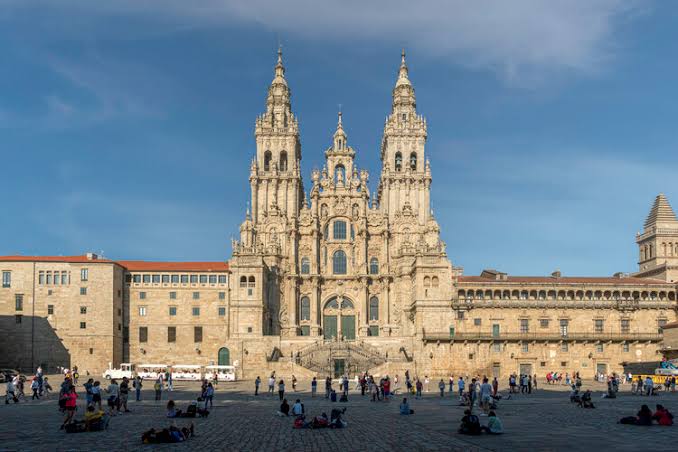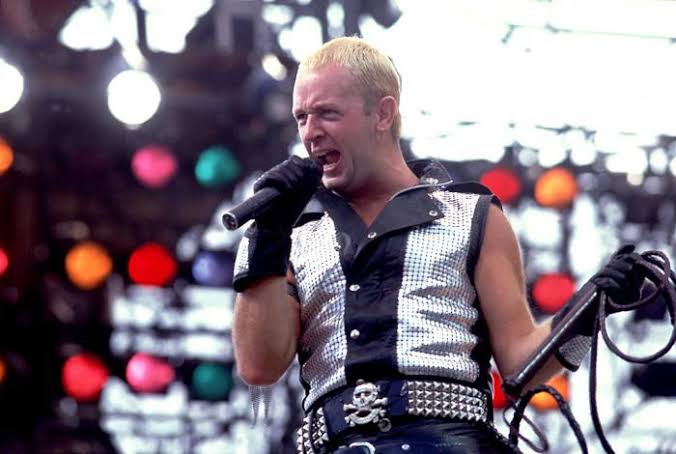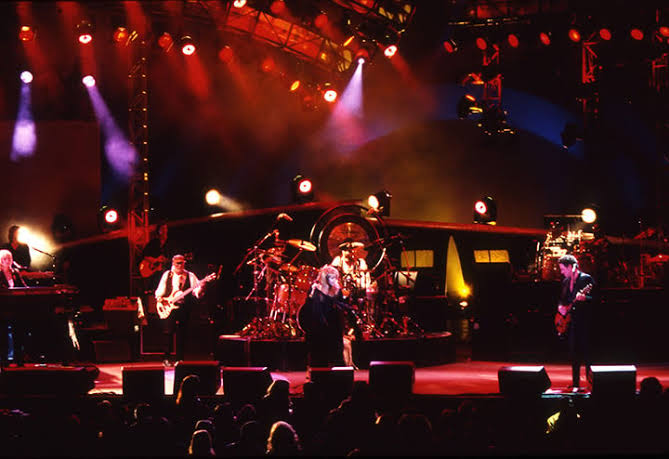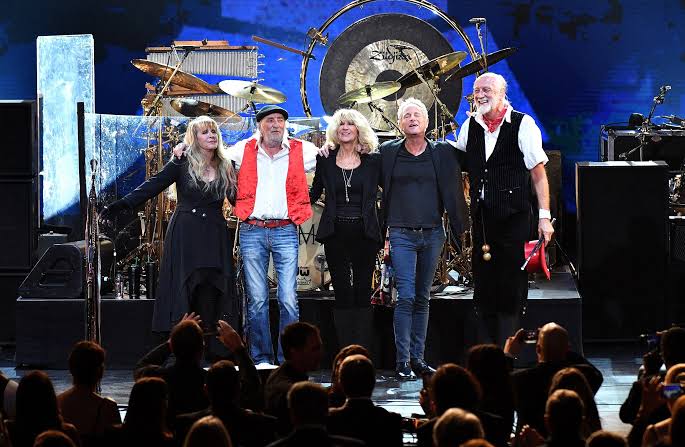
When I was in my 20s, I wanted to do the Camino de Santiago. Not only did I want to do the Camino, but I’d also heard that the old-school way of doing it was to leave from your house, and walk from wherever you were all the way to Santiago de Compostela. I lived in Madrid at the time, near Glorieta de Embajadores, so this sounded like fun. I tested the feasibility of the plan with a paper map and a bottle of water in my backpack, one hot unemployed summer day. This, of course, was back when I was an English teacher, so I was unemployed from July to September every year. And due to the dismal salaries involved in TEFL teaching, I was always looking for things to do that were as cheap as “taking a long walk” or – if possible – even cheaper. Anyway, paper map in hand, I walked from Embajadores up to the Iglesia de Santiago, through the center, up La Castellana to some giant intersection of freeways, through El Pardo and then along the train tracks to Tres Cantos. This was a rather hot and sweaty endeavour of 25 kilometers, which took me most of the day, but I made it, and had proof of concept.
Over the following weeks, armed with the same map, I did a couple more sections, taking the bus or train to start: Tres Cantos to Colmenar Viejo and Colmenar Viejo to Manzanares el Real. Then one day late that same summer I decided it was time to go from Manzanares to Cercedilla. This was off the map, as far as I recall, but by this time I had a Camino de Santiago guidebook that specifically covered the way from Madrid. So setting out on the bus, I walked out of Manzanares el Real around 3 PM thinking I was in for an easy-to-medium-level hike in the hills. Mistakes were made. How to get lost on the Camino de Santiago For one, I started later in the day. I think I was working on my novel at that point (long story) so I left home around lunch time, figuring I’d still have all afternoon to walk. Also, I assumed… That the trail would be well-marked, and further… That I understood enough Spanish to follow the instructions in the guidebook. And finally… That Europe was covered end to end in cafés, bus stops and train stations, so if I got lost, I’d just find the nearest bit of infrastructure and be home in an hour. Oh, to relive that state of youthful self-confidence for a day! Without killing myself, hopefully. As it turned out, I was wrong about all of the above, and what followed was a long afternoon and evening being lost and alone in La Pedriza – a particularly rocky natural park with almost no human habitation. I eventually made it back to civilization, too late for the last bus, and spent the night in the local park, trying to sleep in my t-shirt in the cold. So it turned out that Europe did have some actual nature. Oh well. Live and learn. Fun facts about the Camino de Santiago I was living with some semi-hippies at the time and I told one of them about my “plan” to walk the Camino from Madrid. “Don’t do it”, he said. “You won’t see a single tree all the way across Castilla.” He’d done the Camino himself – the French route – a few summers before, and he described it as a sort of large, ambulatory college party, complete with its own hook-up scene. That sounded pretty good to me. But after my experience getting lost in La Pedriza my heart wasn’t really into it. I never made it up to Santiago – at least not on foot. Still, it’s been in the back of my mind for a couple of decades now, and I’m sure I’ll get to it at some point. I’ve talked about other walking trails in Spain here before. Today, we’re talking about the Camino – the mother of all Spanish walks. A pilgrimage route once called “Europe’s Main Street”, now considered by many to be little more than a walking holiday through some scenic parts of northern Spain. The Camino leads the faithful (or adventure-seeking) across Galicia to the Cathedral in Santiago de Compostela, where the alleged remains of Saint James the Great are considered to have divine powers. More about that later. First things first: lots of Caminos lead to Santiago. There are many different Caminos to Santiago These days people fly in from around the world to walk to Santiago and visit the cathedral. The most popular routes are from Saint-Jean-Pied-de-Port (in the French Basque Country near the Spanish border) or from Oporto, in Portugal. These are called “el camino francés” and “el camino portugués”, respectively. But as I mentioned at the beginning of this article, the historical way was just to start from where you lived and walk. According to tradition, the first pilgrim on the Camino was King Alfonso II of Asturias – also known as Alfonso the Chaste, not to be confused with Alfonso II of Aragón, who was also also known as Alfonso the Chaste. In any case, Alfonso went (chastely, it is assumed) from Oviedo to Santiago to visit the tomb of Saint James after its discovery around the year 825. That route is el Camino Primitivo, and it’s still there, following the ancient Roman roads. Today, you can choose between El Camino Francés, el Portugués, Vía de la Plata (starting in Sevilla), and el Camino de la Costa (following the North coast through Bilbao and Santander, etc). You could even start in Catalonia, with the Ruta Catalana starting at the Montserrat Monastery. There are more routes – technically, there’s probably a route from every town in Spain, all tending to converge on the final stretch through Galicia. I’ve seen the yellow arrows and seashells all over Spain – I recently found, to my surprise, that I was walking on the Camino outside Llívia, the Spanish exclave across the French border in Cerdanya.
Of course, the Camino’s climax is in Santiago de Compostela, in the far northwest of Spain, but many people continue on for a few more days to Fisterra, which the Romans considered to be the end of the known world. (In reality, Cabo da Roca outside Lisbon is a bit further west, but who’s counting?) Other routes cross Europe from Germany, Ireland, the Netherlands, Slovenia, Romania – basically anywhere there are Christians has a pilgrimage route to Santiago. Books and movies have made the Camino more popular If you need Martin Sheen and Emilio Estevez to tell you what’s cool, by all means check out the movie The Way, which came out in 2010. Directed by Estevez, and starring Sheen as an older guy on a journey of self-discovery after the death of his son, it’s made el Camino much more popular – at least among Americans. I’m in a couple of Facebook groups in which people get all excited when the movie pops up on Amazon Prime Video or what have you. There are also a lot of books about the Camino – I may read a couple for a future article. In Spanish, Matilde Asensi has a historical novel set in the 14th century called Peregrinatio, for example. And Paulo “I bet you didn’t know I’d written a second book” Coelho wrote one as well. In English, it’s called The Pilgrimage, and according to the blurb on Amazon it’s “a quest for the ultimate in self-knowledge, wisdom and spiritual mastery”.
Maybe Paolo Coelho is a much deeper person than most, or maybe the late 80s (when he did the walk) were a different time, because nobody I know who’s done the Camino recently came back saying anything about spiritual mastery. Meanwhile, over in South Korea, an author named Kim Nam Hee wrote A Woman Walking Alone, which has led to a dramatic increase in Koreans on the Camino. There are “camino purists” with strong opinions about the whole thing In any case, people walk for different reasons. For some, it’s surely part of a spiritual journey. For others, it’s just a fun adventure and a couple of weeks off work. But be careful: there are all sorts of online “camino purists” who just might tell you that you’re doing it wrong. They’re in the Facebook groups as well, and their complaints are usually about people who choose just to walk the last 100 or so kilometers from Sarria (the minimum walk you can do to get the official certificate in Santiago) or people who have their packs shipped ahead each day so they don’t have to carry them between towns. If you want an easier Camino, though, there are all kinds of services along the way that will help you – especially if you’re doing one of the well-known routes. And just because I used a paper map 20 years ago doesn’t mean you have to: there are now several mobile apps that will guide you along the route of your choice, with information about “albergues” along the way and more. (Or you could use a generic hiking app like WikiLoc and figure out the rest of the logistics on your own or with a guidebook.) Some people even choose to cycle the Camino. The purists seem especially bothered by cyclists, but the paths are there for anyone to use, whether it’s on foot, on a donkey, or on a shiny, new, top-of-the-line mountain bike. You might be engaging in “religious appropriation” if you walk the Camino I’m probably not the best person to talk to about religious appropriation. I haven’t bought this book, because I’d prefer not to spend perfectly good money to be scolded by someone with a Ph.D. – but you’re welcome to check out Liz Bucar’s “Stealing My Religion”, which talks about the Camino and yoga, among other things.






